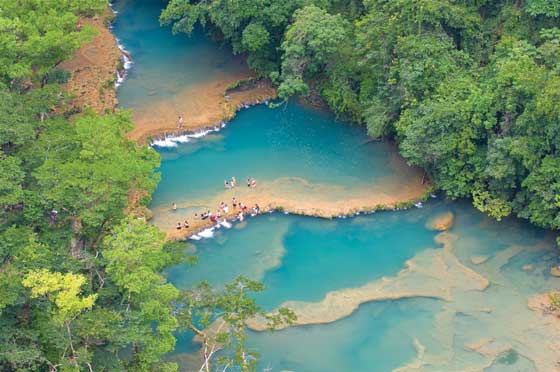Turquoise
Turquoise is just a stew of copper and aluminum, found in Turkey as in much of the world, a soft stone that’s a symbol for December and the holiday season. Turquoise was on the list of paint colors approved by the Spanish Colonial governments, and many little tiendas and homes continue to be painted turquoise blue. When our neighbor painted his house and door turquoise, he used the extra paint to cover his pickup, so it now blends into the walls when parked outside.
Pools of turquoise waters form at many of Guatemala’s hot springs. My favorites may be the resort of Semuc Champey near Cobán, in the Alta Verapaz Highlands, and the nearby Grotto of Lanquín, with pleasant year-round camping by the warm turquoise waters.
Most of magnificent Lake Atitlán is rich garnet blue, not at all turquoise. But just a few miles from Panajachel, off the village of Santa Catarina Palopó, the Bay of Peña de Oro stretches from the sandy beach in a soft turquoise. Mornings, fishermen’s canoes seem to float on a polished altar of turquoise, the dark volcano backdrop accentuating the light blue bay.
Turquoise-bodied hummingbirds work Guatemalan flowers year-round, not bothering to migrate north or south as do most of their hummingbird cousins. The Maya tell a legend of our hummingbirds protecting a young Maya chief, wounded in battle. When the wounds proved too grave, the hummingbirds created the quetzal bird from the chief, and hummingbird designs are still common on Mayan weavings.
Spanish padres during the Colonial centuries accepted pieces of turquoise found occasionally by miners. Look for these turquoise accents in most chapels and churches, reminders of December’s birthstone and the light blue color that’s beloved worldwide.
